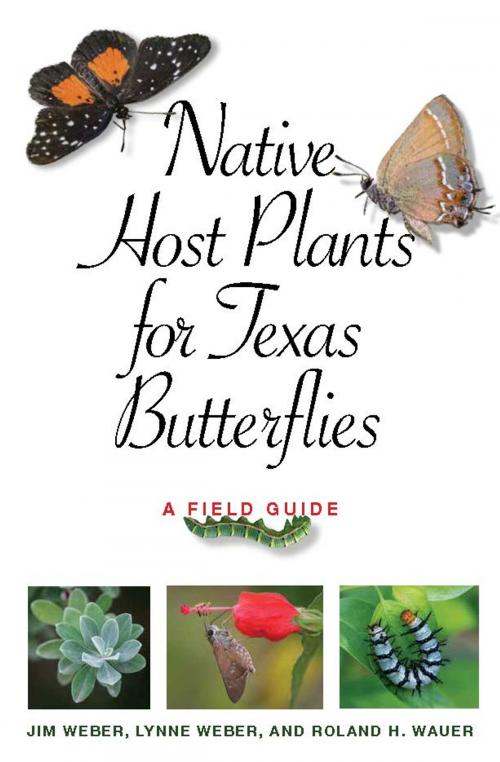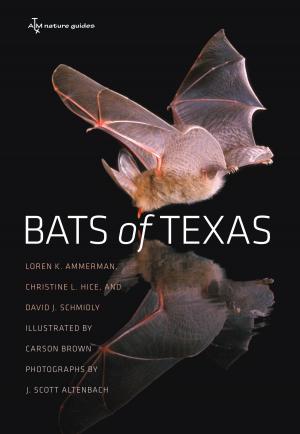Native Host Plants for Texas Butterflies
A Field Guide
Nonfiction, Science & Nature, Nature, Insects & Spiders, Plant Life, Plants| Author: | Jim Weber, Lynne M. Weber, Roland H. Wauer | ISBN: | 9781623496470 |
| Publisher: | Texas A&M University Press | Publication: | August 1, 2018 |
| Imprint: | Texas A&M University Press | Language: | English |
| Author: | Jim Weber, Lynne M. Weber, Roland H. Wauer |
| ISBN: | 9781623496470 |
| Publisher: | Texas A&M University Press |
| Publication: | August 1, 2018 |
| Imprint: | Texas A&M University Press |
| Language: | English |
While many growers focus on attracting adult butterflies to their gardens, fewer know about the plants that caterpillars need to survive. Native host plants—wildflowers, trees, shrubs, vines, grasses, and sedges—not only provide a site for the butterfly to lay its eggs, they also provide a ready food source for the emerging caterpillar. Think of these plants as the nurseries of the garden. This user-friendly, heavily illustrated field guide describes 101 native larval host plants in Texas. Each species account includes descriptive information on each plant, a distribution map, and photos of both the caterpillars and adult butterflies who frequent those plants.
An adult butterfly may nectar on a wide variety of flowers, but caterpillars are much more restricted in their food sources. Some feed on only a limited number of plant species, so female butterflies seek out these specific plants to lay their eggs. For example, the host plants for Monarch caterpillars are various species of milkweed. Often, these plants are not the same as the ones the adult butterfly will later use for nectar.
Learning more about the plants caterpillars need is crucial for butterfly conservation. Butterflies’ dependency on specific caterpillar host plants is one of the key factors restricting their range and distribution. Armed with this knowledge, readers can also hone their ability to find specific species of breeding butterflies in nature. This is a handy guide whether you are in the field searching for butterflies or on the hunt for butterfly-friendly options at your local plant sale.
While many growers focus on attracting adult butterflies to their gardens, fewer know about the plants that caterpillars need to survive. Native host plants—wildflowers, trees, shrubs, vines, grasses, and sedges—not only provide a site for the butterfly to lay its eggs, they also provide a ready food source for the emerging caterpillar. Think of these plants as the nurseries of the garden. This user-friendly, heavily illustrated field guide describes 101 native larval host plants in Texas. Each species account includes descriptive information on each plant, a distribution map, and photos of both the caterpillars and adult butterflies who frequent those plants.
An adult butterfly may nectar on a wide variety of flowers, but caterpillars are much more restricted in their food sources. Some feed on only a limited number of plant species, so female butterflies seek out these specific plants to lay their eggs. For example, the host plants for Monarch caterpillars are various species of milkweed. Often, these plants are not the same as the ones the adult butterfly will later use for nectar.
Learning more about the plants caterpillars need is crucial for butterfly conservation. Butterflies’ dependency on specific caterpillar host plants is one of the key factors restricting their range and distribution. Armed with this knowledge, readers can also hone their ability to find specific species of breeding butterflies in nature. This is a handy guide whether you are in the field searching for butterflies or on the hunt for butterfly-friendly options at your local plant sale.















